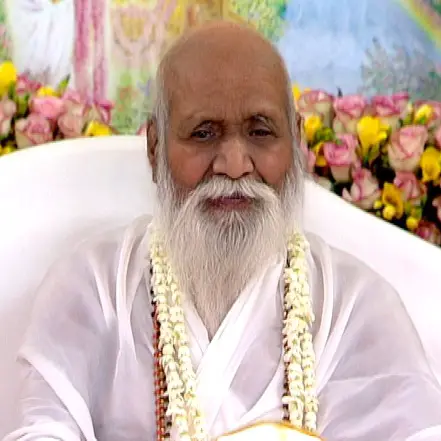Japa meditation is a spiritual practice that has been used for centuries to connect with the divine and promote inner peace and well-being. The practice involves the repetition of a mantra or sacred word, which serves as a focal point for the mind and helps to quiet the internal dialogue.
In this article, we will explore the origins and cultural significance of japa meditation, the different types of mantras that can be used, and the benefits of incorporating this practice into your daily routine.

Table of Contents
What is Japa Meditation?
Japa meditation is a spiritual practice that involves the repetition of a mantra or sacred word with the aim of focusing the mind and connecting with the divine. The word “japa” means “muttering” or “mumbling” in Sanskrit, and refers to the repeated recitation of a mantra.
The practice of japa meditation is found in many different spiritual traditions, including Hinduism, Buddhism, and Sikhism. It is often used as a form of devotion or prayer, and can also be used for personal transformation and spiritual growth.
To practice japa meditation, a practitioner typically chooses a mantra that resonates with them and begins repeating it either out loud or silently. The repetition of the mantra is used as a focal point for the mind, helping to quiet the chatter of the internal dialogue and promote a sense of inner peace and calm.
Japa meditation is often practiced using a mala or prayer beads, which can help to keep track of the number of repetitions of the mantra. The practitioner typically repeats the mantra for a set period of time, focusing their attention on the sound and rhythm of the words.
Through regular practice, japa meditation can help to cultivate a sense of inner stillness and awareness, promote relaxation and reduce stress, and deepen one’s spiritual connection with the divine. It is a simple yet powerful practice that can be adapted to suit a wide range of beliefs and intentions.
How to practise Japa Meditation
Here are some key aspects of japa meditation practice:
- Choose a mantra: The first step in japa meditation is to choose a mantra or sacred word to repeat. The mantra should be something that resonates with the practitioner and has a positive, uplifting meaning. Some popular mantras used in japa meditation include “Om,” “Aum,” “So Hum,” and “Om Namah Shivaya.”
- Find a quiet place: Japa meditation can be practiced anywhere, but it’s helpful to find a quiet place where you won’t be disturbed. This could be a dedicated meditation space or simply a quiet corner of a room.
- Sit comfortably: It’s important to sit in a comfortable position for japa meditation, as you will be sitting for an extended period of time. You can sit on a cushion on the floor, in a chair, or on a meditation bench. Whatever position you choose, make sure your back is straight and your head is aligned with your spine.
- Close your eyes: Closing your eyes helps to block out distractions and allows you to focus inward.
- Begin repeating the mantra: Start repeating the mantra in your mind or out loud, depending on your preference. It’s helpful to focus on the sound of the mantra and the feeling of the breath as you repeat it.
- Maintain focus: As you repeat the mantra, it’s natural for your mind to wander. When you notice your mind has wandered, gently bring your focus back to the mantra. This process of bringing your attention back to the mantra is an important part of the practice.
- Practice regularly: Japa meditation is most effective when practiced regularly, ideally on a daily basis. Even just a few minutes of practice each day can have significant benefits over time.
Overall, japa meditation is a simple yet powerful practice that can help calm the mind, reduce stress, and promote a sense of well-being. With regular practice, practitioners can experience greater focus, clarity, and inner peace in their daily lives.
Benefits of Japa Meditiation
Japa meditation is known for its numerous benefits for mental, emotional, and physical health. Here are some of the potential benefits of practicing japa meditation:
- Reducing stress and anxiety: Japa meditation can help calm the mind and promote a sense of relaxation, reducing feelings of stress and anxiety.
- Improving concentration: By focusing on a mantra or sacred word, japa meditation can help improve concentration and focus.
- Enhancing self-awareness: Regular practice of japa meditation can increase self-awareness and mindfulness, helping individuals to become more in tune with their thoughts, emotions, and inner experiences.
- Promoting inner peace and well-being: Japa meditation can help promote a sense of inner peace and well-being, leading to greater overall happiness and contentment.
- Improving sleep: Practicing japa meditation before bed can help calm the mind and improve sleep quality, leading to greater overall health and well-being.
- Boosting the immune system: Research suggests that regular meditation, including japa meditation, may help boost the immune system, reducing the risk of illness and disease.
- Enhancing brain function: Studies have shown that meditation can improve brain function and increase gray matter in the brain, leading to greater cognitive abilities.
Overall, japa meditation can have a powerful impact on mental, emotional, and physical health, promoting greater well-being and happiness in daily life. By incorporating japa meditation into their daily routine, individuals can experience greater calm, clarity, and inner peace.
History and Cultural Significance of Japa Meditation
Japa meditation has a rich history and cultural significance in both Hinduism and Buddhism. The practice involves the repetition of a mantra, or sacred word, with the aim of focusing the mind and connecting with the divine. Here are some key aspects of the history and cultural significance of japa meditation:
- Hinduism: Japa meditation has a long history in Hinduism, with the practice dating back thousands of years. The Vedas, the oldest texts in Hinduism, contain references to japa as a form of spiritual practice. In Hinduism, japa is often associated with devotion to a particular deity, with the repetition of the deity’s name or mantra seen as a way of connecting with that divine energy.
- Buddhism: Japa meditation is also a key practice in Buddhism, particularly in the Mahayana and Vajrayana traditions. In Buddhism, japa is often referred to as “mantra meditation,” with the repetition of a mantra seen as a way of purifying the mind and cultivating spiritual insight. In Tibetan Buddhism, the practice of japa is often accompanied by visualizations and other techniques to enhance its effectiveness.
- Cultural significance: Japa meditation is an important part of many religious and cultural traditions throughout Asia, including Hinduism, Buddhism, Jainism, and Sikhism. The practice is often used in religious ceremonies and rituals, as well as in personal spiritual practice. In some traditions, japa meditation is seen as a way of attaining spiritual liberation or enlightenment, while in others it is viewed as a way of connecting with the divine and cultivating inner peace and well-being.
Overall, japa meditation has a rich history and cultural significance in many parts of the world, and remains an important spiritual practice for millions of people today. By connecting with the divine through the repetition of a mantra, practitioners can cultivate greater inner peace, spiritual insight, and overall well-being.
Different Types of Mantras for Japa Meditation
There are many different types of mantras used in japa meditation, each with its own unique meaning and purpose. Here are some of the different types of mantras, along with some recommendations for the best mantras for japa meditation:
- Bija mantras: Bija mantras are seed mantras, consisting of a single syllable or sound that is said to represent a particular energy or quality. Some examples of bija mantras include Om, Hrim, and Shrim.
- Devotional mantras: Devotional mantras are often associated with specific deities or spiritual figures, and are used to cultivate a sense of devotion and connection with the divine. Some examples of devotional mantras include Om Namah Shivaya, Hare Krishna, and Om Namo Bhagavate Vasudevaya.
- Healing mantras: Healing mantras are said to have a particular vibrational frequency that can help to balance and heal the body and mind. Some examples of healing mantras include Om Shanti, Gayatri Mantra, and Maha Mrityunjaya Mantra.
- Tantric mantras: Tantric mantras are often used in Vajrayana Buddhism and other esoteric traditions, and are said to have the power to transform consciousness and lead to spiritual awakening. Some examples of tantric mantras include Om Mani Padme Hum, Vajra Guru Mantra, and Kali Mantra.
- Personalized mantras: Some practitioners of japa meditation choose to create their own personalized mantras, based on their personal beliefs and intentions. These mantras can be a powerful tool for cultivating self-awareness and personal growth.
Recommendations for the best mantras for japa meditation:
- Om: Om is considered the most fundamental mantra in Hinduism and is said to represent the sound of the universe. It can be chanted alone or as part of a longer mantra.
- So Hum: So Hum means “I am that” in Sanskrit and is a simple, yet powerful mantra that can help to cultivate self-awareness and inner peace.
- Gayatri Mantra: The Gayatri Mantra is a Hindu prayer for enlightenment and is said to bestow wisdom and understanding. It is often used for healing and spiritual purification.
- Om Namah Shivaya: This is a devotional mantra to Lord Shiva, one of the most important deities in Hinduism. It is believed to have the power to remove negative energy and promote spiritual growth.
- Om Mani Padme Hum: This is a Tibetan Buddhist mantra that is said to invoke the blessings of the Bodhisattva of Compassion, Avalokiteshvara. It is often used for healing and compassion meditation.
Frequently Asked Questions for Japa Meditation
How long should I practice japa meditation?
The length of time you practice japa meditation can vary depending on your individual needs and preferences. Some people find it helpful to practice for 10-15 minutes per day, while others may practice for longer periods of time.
Can I use any mantra for japa meditation?
It is important to choose a mantra that resonates with you and supports your spiritual practice.
Is japa meditation only practiced in Hinduism and Buddhism?
Japa meditation has its roots in Hinduism and Buddhism and is practiced by people of many different spiritual and religious traditions around the world. The practice can be adapted to suit a wide range of beliefs and intentions.
See Related Posts

Mantras to Live By

Best Mantras for Exams

Transcendental Meditation Mantras

